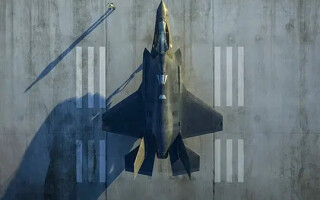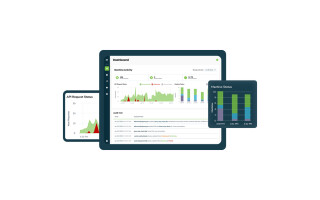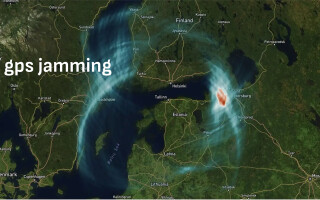GUEST BLOG: Changes in naval warfare -- AI and unmanned systems at WEST 2025
BlogApril 29, 2025

Over about 20 years of working in U.S. Navy systems technology development – including must-have upgrades in radar, electronic warfare (EW), laser weapons, and more – I’ve witnessed firsthand how technology transforms naval warfare: The changes aren’t rapid! Delivering new transformative capabilities can take decades, from requirements development to securing funding to system development, integration, and testing.
Thankfully, some areas appear to be changing. Driven by geopolitical competition, the Navy is aligned with a sense of urgency in delivering against Chief of Naval Operations' initiatives, particularly those related to unmanned systems and Fleet command and control.
At AFCEA WEST 2025 – held in January 2025 – these efforts were front and center in numerous keynote addresses, panel discussions, and talks with the myriad of software and artificial intelligence (AI) companies present. We're at a pivotal moment in naval and technology history, where the convergence of operational need, new operational architectures, a culture of experimentation, and advances in artificial intelligence – including AI operating in edge devices – are enabling rapid advances in autonomy and decision support that may fundamentally reshape how we maintain maritime dominance.
During my time leading Project Overmatch, we demonstrated how edge AI-enabled autonomous systems could operate and be updated effectively, including in maritime environments where connectivity isn't guaranteed. In this way, we can take advantage of broader developments in areas of AI like computer vision, and then safely and effectively use those models in systems that can't or won't access the cloud. From computer vision on a drone to decision support in an operations center, these models must safely and effectively operate on the edge.
From discussion in the keynote addresses by the Pacific Fleet Commander and Central Command Deputy Commander to panels on disruptive capabilities, robotic autonomous systems acquisition, the Pentagon’s Replicator initiative, and fleet operations, every aspect of fleet introduction and use of unmanned systems was discussed. Another theme was speed – the need for a sense of urgency to deliver but also to adapt. These mindsets show the culture of experimentation, or developing new concepts of operation in concert with the latest capabilities.
While there are missions where sending a robot makes more sense than sending a human – for example, mine warfare – it’s also clear that we just need more mass for missions like sea control. Rejecting previous arguments that “precision is the new mass,” we heard the Seventh Fleet Commander say during WEST 2025, "Mass is the new mass."
The Navy is squarely aligned from senior leadership on down to the enlisted level on the urgent need to adopt unmanned systems into what it calls a hybrid fleet. The convergence of operational imperative and technological advances – on display at WEST 2025 and currently in development in the commercial industry – means that these unmanned systems can be AI-enabled to exhibit ever-increasing levels of autonomous behavior. I'm optimistic that the jump-start given by efforts like AMMO, Replicator, and Overmatch, coupled with Fleet experimentation and a culture of experimentation, will deliver the hybrid fleet and along the way will ensure that any body of water can be made into a hellscape for the enemy at will.
Latent AI · https://latentai.com/






